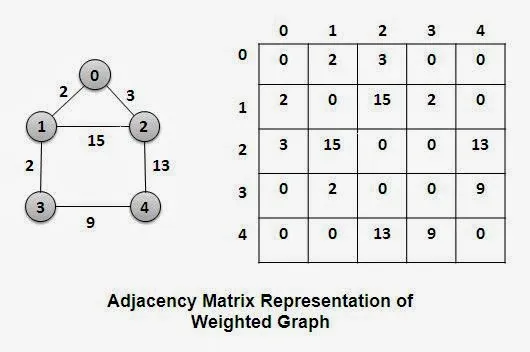Given an adjacency list representation of a Graph, the task is to convert the given Adjacency List to Adjacency Matrix representation.
Examples:
Input:_ adjList[] = {{0 –> 1 –> 3}, {1 –> 2}, {2 –> 3}} _
Output:
0 1 0 1
0 0 1 0
0 0 0 1
0 0 0 0
Input:_ adjList[] = {{0 –> 1 –> 4}, {1 –> 0 –> 2 –> 3 –> 4}, {2 –> 1 –> 3}, {3 –> 1 –> 2 –> 4}, {4 –> 0 –> 1 –> 3}} _
Output:
0 1 0 0 1
1 0 1 1 1
0 1 0 1 0
0 1 1 0 1
_1 1 0 1 0 _
Recommended: Please try your approach on {IDE} first, before moving on to the solution.
Adjacency List: An array of lists is used. The size of the array is equal to the number of vertices. Let the array be an array[]. An entry array[i] represents the list of vertices adjacent to the ith Vertex.
Adjacency Matrix: Adjacency Matrix is a 2D array of size V x V where V is the number of vertices in a graph. Let the 2D array be adj[][], a slot adj[i][j] = 1 indicates that there is an edge from vertex i to vertex j.
Follow the steps below to convert an adjacency list to an adjacency matrix:
- Initialize a matrix with 0s.
- Iterate over the vertices in the adjacency list
- For every jth vertex in the adjacency list, traverse its edges.
- For each vertex i with which the jth vertex has an edge, set mat[i][j] = 1.
#data structures #graph #graph traversals #graph-basics #data analysis
